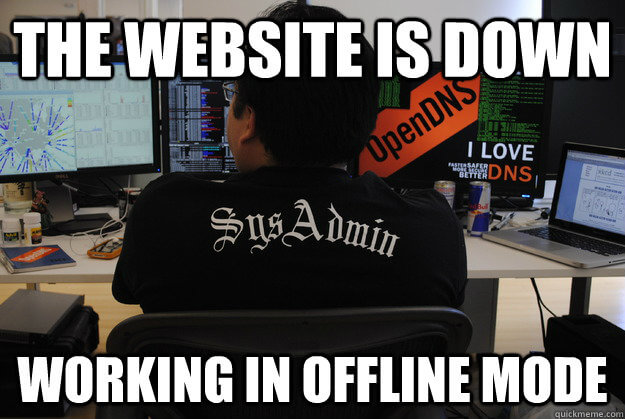
by iNode Cloud | Nov 5, 2015 | Articles, Blog, How To's, Technical
Getting your website to load faster is not an option but a need. In this competitive world, you have to run to stay at the same place. Who would stop and wait for your slow loading website to see what they want. Obviously No one. You want your website to run lightning fast but you are left with limited options as the end users have different expectations of getting flashy and well-designed content. Afterall user experience counts more than user interface and getting your website load faster is the first step towards providing a superb user experience. So do you think it’s a trade-off between speed and user experience? Umm.. Not absolutely right but not absolutely wrong though. Here are some tips to help you improve your site loading performance by maintaining a good user experience: Avoid Large Images Whatever story you want to tell, tell it at the right size. Try resizing or scaling the image before uploading it in your website. Uploading large images and then changing dimensions would make the website loading slow as it tries to download the same large image on opening of the website. Compressing the image before uploading will be the best idea. We recommend using tinypng.com Enable Browser Caching Keeping a small amount of website info at end user’s browser would make the website loading faster as it has lesser content to be downloaded from internet. Change your server settings accordingly, but ensure end-user gets the current content not the same old ones. Enable Compression It is like disassembling your house, moving it to another location, and then...

by Kappy Prasad | Feb 27, 2015 | Articles, Blog, Story
Before starting iNode Cloud, I have been with Crazy Domain, Go Daddy and various other hosting companies only to be offered bad service and slow and inconsistent downtimes and there’s no shortage of web hosting companies that do this, Hence why i decided to start iNode Cloud. Sometimes web hosts have technical problems or make mistakes, but when should you stick it out and when should you cut your losses and move on? Here are the top six signs your web host isn’t up to the job. 1. Your website is flaky and keeps going down No surprises here. If your website is unavailable or keeps throwing up errors, visitors will leave and not come back. Unless you’re offering something unique or already have a loyal following, this can kill your website in a very short time. Overloaded servers and inadequate networks are likely causes of problems with your web host. Sometimes a web hosting company will start strong but get progressively worse as it gains more customers; a victim of its own success. To be fair, it’s not always the fault of the web host. If your site is making unreasonable demands like using huge amounts of memory or processing time, there’s going to be trouble. Ideally, your web host will notice and prompt you to upgrade to a package with higher limits. The best ones will cover you if you get a sudden burst of traffic from the front page of Digg, and ask you to upgrade if it becomes a habit. Having too much traffic is a good problem to have, but if your site is not scaling, you should look...

by Kappy Prasad | Feb 9, 2015 | Articles, Blog, Linux, Technical
MySQL Replication is incredibly simple to get up and running and this post will instruct you through it. Simple Master -> Slave Replication MySQL allows you to build up complex replication hierarchies, such as multi-master, chains of read slaves, backup databases at a remote site or any combination of these. This article focuses on a simple single master to single slave setup. This article also assumes that 2 MySQL Servers have been installed but that there is no existing data in the master that needs to be copied to the slave – it’s not complex to add that extra requirement and it will be covered in a future post. Server “masterhost” (192.168.0.31) is to be our master and “slavehost” (192.168.0.34) the slave. Step 1: Edit the configuration files & start the MySQL Servers The first step in setting up replication involves editing the “my.cnf” file on the servers that will serve as the master and slave. A default is provided with the MySQL installation but in case there is already a production MySQL database running on these servers, we provide local configuration files “master.cnf” and “slave.cnf” that will be used when starting up the MySQL servers. At a minimum we’ll want to add two options to the [mysqld] section of the master.cnf file: log-bin: in this example we choose inodecloud-bin.log server-id: in this example we choose 1. The server cannot act as a replication master unless binary logging is enabled. The server_id variable must be a positive integer value between 1 to 2^32 master.cnf: [mysqld] server-id=1 log-bin=black-bin.log datadir=/home/inode/mysql/master/data innodb_flush_log_at_trx_commit=1 sync_binlog=1 Note: For the greatest possible durability and consistency in...

by Kappy Prasad | Jan 21, 2015 | Articles, Blog, Linux, Technical
If you’re a developer or work in IT, you’ve likely heard of Docker. It’s a 3 year old open source technology that has grown exponentially during its existence. And now, it’s beginning to turn heads in even the most regulated industries. First let’s explore what Docker actually is for those that are unfamiliar. “Docker is an open platform for developers and sysadmins to build, ship, and run distributed applications,” according to the Docker website. The technology consists of two tools, the Docker Engine and the Docker Hub. The Docker Engine is a, “portable, lightweight runtime and packaging tool,” while Docker Hub is a, “cloud service for sharing applications and automating workflows.” The technology is particularly appealing for developers because it is now easier than ever to make sure you develop, test and deploy using the same environment as your colleagues, resulting in less issues caused by differences or missing libraries. Docker also offers developers the flexibility to quickly run their apps anywhere, whether its on laptops, VMs or QA servers. More simply put, “Docker helps developers build and ship higher-quality applications, faster.” Sysadmins are finding the technology useful as well, because of the ability to standardize development environments among other reasons. “Docker helps sysadmins deploy and run any app on any infrastructure, quickly and reliably.” Docker seems to be on the same disruption path as GitHUB, which shook the source control systems, or more lately, how composer “revolutionized” the way we deploy components of a PHP and Symfony application. On the business side, the benefits may be huge. By simplifying the way we deploy apps and creating more manageable...

by Kappy Prasad | Jan 19, 2015 | Articles, How To's, Linux, Technical, Wordpress
With WordPress powering 61% of CMS based websites, it has become a lucrative target for hackers. Google blacklisting for phishing and email blacklisting for spamming is quite common in WordPress hosting. A well maintained WordPress site is immune to hacking, but in shared hosting, the majority of WordPress websites will be un-patched, and vulnerable to hacking. Through a few simple strategies, it is possible to make WordPress immune to hacking. Securing the web server through web application firewalls The efficiency of a web application firewall largely depends on how quickly the firewall is able to include zero day WordPress exploits into their signature database. While commercial signatures gave close to 100% detection rates, free rules from Comodo, AtomiCorp, etc for the mod_security Apache module is good enough to prevent more than 95% of exploit attempts. Additionally, we were able to extend the malware detection capability of mod_security module by integrating it with ClamAV anti-virus software. Enabling auto-upgrade for WordPress installations Since WordPress v3.7, automatic security updates are switched on by default, and wouldn’t break anyone’s site. We further extended this feature by plugins like Advanced Automatic Updates, which can upgrade plugins and themes as well. For customers who chose security over extensive customization, the full-auto-upgrade worked very well in preventing website exploits. File upload scanning through FTP Compromised FTP accounts are another major source of malware uploads. Desktops, laptops and mobile devices get infected with trojans all the time, and web masters losing their FTP login details are a common cause of malware uploads. We put a block on this channel by deploying file upload scanners. For those web hosts...






